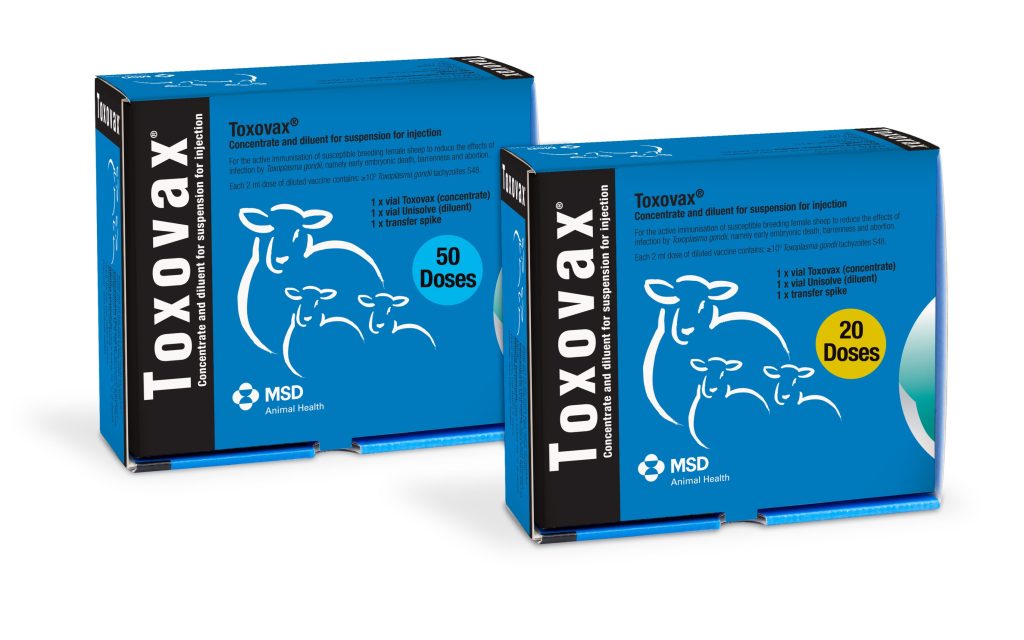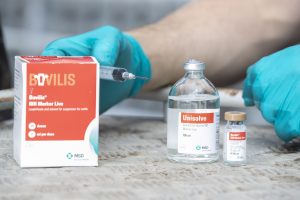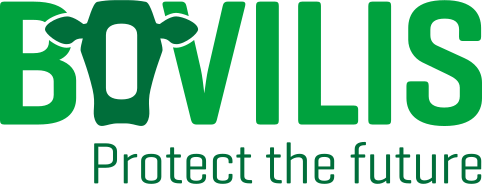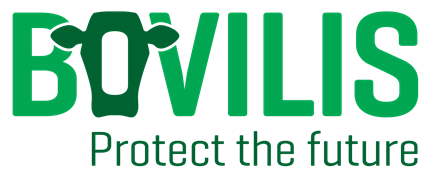
What is it?
Toxovax is a vaccine used to reduce the effects of infection by Toxoplasma gondii in
sheep.
Toxoplasmosis is a disease caused by a protozoan parasite, Toxoplasma gondii.
The main source of infection is cat faeces. One cat can shed enough oocysts to
infect thousands of ewes. These oocysts are very resilient and can survive for very
long periods in feed or on pasture.
Toxoplasma gondii infection can cause early embryonic death, infertility, mummified
foetuses, stillbirths and abortion in sheep. Lambs may be born living but weak and
fail to thrive.
It is highly important to submit all ewe abortion materials to the regional laboratory
for diagnosis. Other methods of diagnosis in sheep abortion cases are less reliable.
The disease is zoonotic, which means it can be passed to humans. Pregnant women
are particularly vulnerable to infection and should avoid all involvement with lambing
ewes.

Control of toxoplasmosis in sheep includes retaining sheep in the flock after
abortions confirmed to have been caused by Toxoplasma gondii (sheep that have
aborted as a result of toxoplasmosis are immune), controlling rodent populations with
neutered cats and vaccinating with Toxovax.
How to use it:
Dose: 2 ml by intramuscular injection
Basic vaccination:
Animals should be given a single dose at least 3 weeks prior to mating. Ewe lambs,
where it is intended to breed from them, may be vaccinated from 5 months of age. Shearlings and older ewes should be vaccinated during the 4-month period prior to mating.
Re-vaccination:
After 2 years, a single dose at least 3 weeks prior to mating.
Withdrawal: meat and offal 42 days.
Toxovax can be administered on the same day as but not mixed with Enzovax.
Why use it?
It can be very hard to fully prevent cats from accessing your flock’s food supply, so
vaccination against Toxoplasmosis offers an additional method of control.
Toxovax is administered to all breeding ewes in the first year and then any replacements
being introduced to the flock there after.
Related Video
To activate the video player please allow cookies in category ‘Performance and Operation’ and refresh this page.
Related Articles
- Flies – Nuisance by name, nuisance by nature
 With temperatures slowly on the rise, next on the agenda – fly season. Impact on production and spread of disease Anyone who has worked with cattle during the summer months needs little reminding of the annoyance which flies can cause. They can be responsible for a state of unrest in the parlour for both cows … Read more
With temperatures slowly on the rise, next on the agenda – fly season. Impact on production and spread of disease Anyone who has worked with cattle during the summer months needs little reminding of the annoyance which flies can cause. They can be responsible for a state of unrest in the parlour for both cows … Read more - Reducing Abortion Rates in Your Flock: Enzootic Abortion of Ewes and Toxoplasmosis
 Eleanor Brady, MVB MRCVS, Ruminant Veterinary Manager, MSD Animal Health Many Irish flocks will experience a few abortions each year, but how many abortions is too many? Targets for abortion and overall empty rate are set at <2% and <5% respectively, although many flock owners accept rates higher than this. Approximately one third of lamb … Read more
Eleanor Brady, MVB MRCVS, Ruminant Veterinary Manager, MSD Animal Health Many Irish flocks will experience a few abortions each year, but how many abortions is too many? Targets for abortion and overall empty rate are set at <2% and <5% respectively, although many flock owners accept rates higher than this. Approximately one third of lamb … Read more - IBR Vaccination of Youngstock
 Helena Madden MVB MRCVS Cert DHH Ruminant veterinary manager MSD Animal Health IBR – Infectious bovine rhinotracheitis Infection with IBR virus is widespread in the cattle population in Ireland, with evidence of exposure in over 70% of herds (both beef and dairy). It is capable of causing disease (both clinical and subclinical) resulting in significant … Read more
Helena Madden MVB MRCVS Cert DHH Ruminant veterinary manager MSD Animal Health IBR – Infectious bovine rhinotracheitis Infection with IBR virus is widespread in the cattle population in Ireland, with evidence of exposure in over 70% of herds (both beef and dairy). It is capable of causing disease (both clinical and subclinical) resulting in significant … Read more

“Animal Health Ireland estimate the annual cost of BVD to Irish herds totals €102 million.”
Sign up to Bovilis® product and event information

MSD Animal Health
Red Oak North, South County Business Park, Leopardstown,
Dublin 18, Ireland
vet-support.ie@msd.com
PHONE
CATTLE DISEASES




